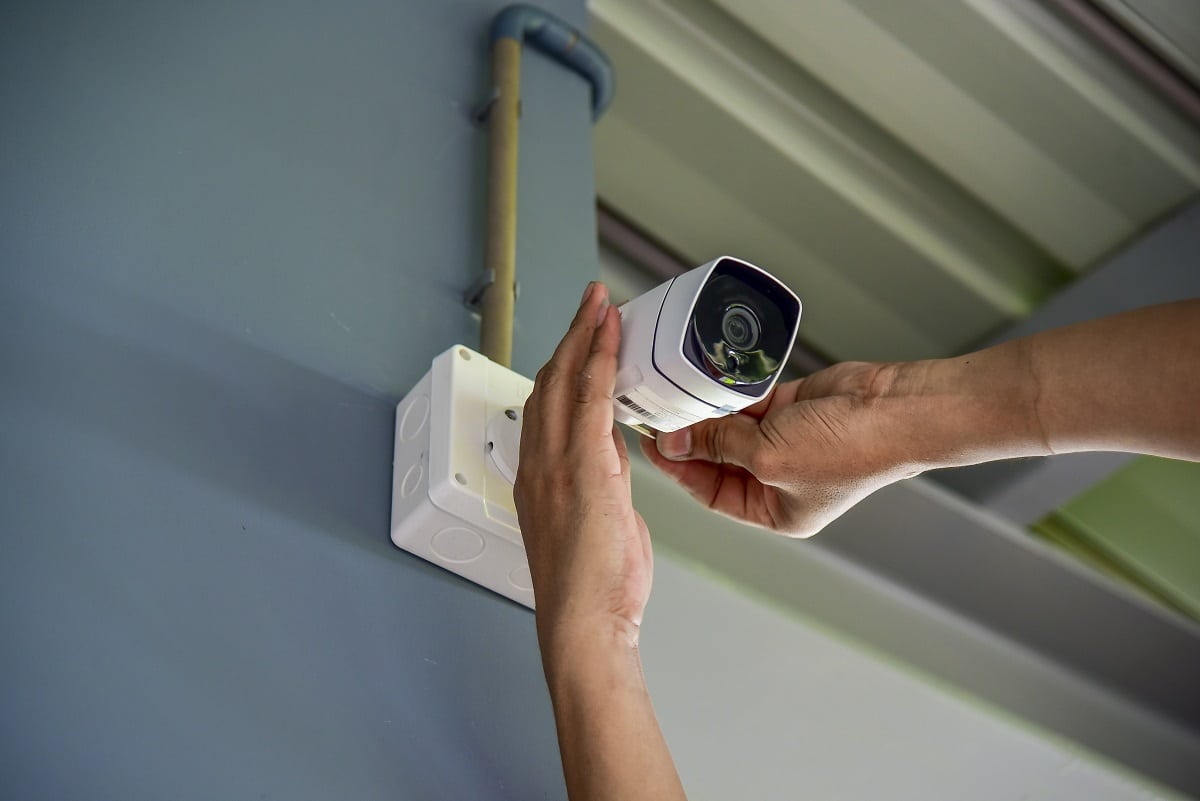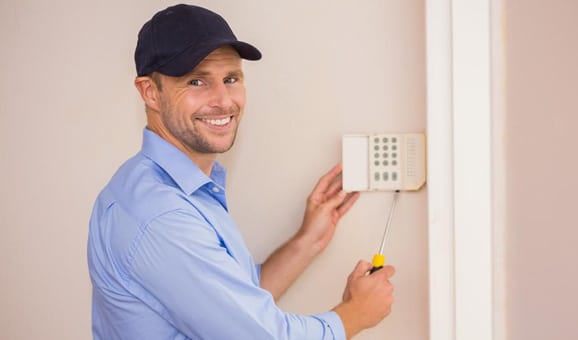Updated 10th April 2024.
According to the Australian Bureau of Statistics, an estimated 238,100 households experienced a break-in from 2019 to 2020. Cases of malicious property damage are also a problem, with 448,800 households having experienced at least one incident within the same period.
Some homeowners—11 per cent for break-ins, 23 per cent for property damage—chose not to report these incidents to the police, thinking that the incident was unimportant. Among the victims of property damage, 12 per cent thought there was nothing the police could do.
With these types of crimes still rampant, it’s important for homeowners to invest in extra security measures like CCTV cameras and motion detectors. Security cameras not only discourage burglars from targeting your home, but they also make it easier for you to report the incident to the police and identify the culprit.
Most security camera systems these days are designed to be quickly installed without the need for professional services. You only need to know the ideal placements to maximise the cameras’ range.
Where to Place CCTV Cameras
The first step in security camera installation is to plan their positions. Other than the cameras’ range, you also want to consider the length of their cables; they must be long enough to reach the nearest power sockets. If you don’t want to deal with the mess of wires, you can get a wireless system instead.
Below we have listed the ideal placements for home security cameras:
- Front, side & back entrances: Point the camera toward the walkway or sidewalk to capture the faces of everyone coming up to your door. To keep people from throwing items at or tampering with your camera, you can fit a wire cage around it or mount it at the second-floor level. French and patio doors are especially vulnerable to break-ins, so make sure to install cameras in these areas.
- Ground-floor windows: Windows that aren’t facing the street are common entry points for burglars. Other than CCTV cameras, install smart window locks as security reinforcements.
- Garages and detached buildings: Burglars target detached structures because many homeowners don’t think to secure these areas. If you’re Wi-Fi doesn’t reach these spots, you can either get a range extender or a camera that doesn’t need an internet connection.
- Backyard: Make sure your outdoor cameras cover every inch of your backyard to eliminate blind spots. You can supplement your backyard CCTV with security lights to discourage burglars from going near your property.
- Second floor: Secure your second-floor main hallway with an indoor camera to safeguard your valuables. It’s a great way to provide more video evidence in case you have to report a burglary.
How to Install CCTV Cameras
- Mark the spot where you’ll attach the bracket for mounting. Drill the holes, then insert raw plugs before screwing the bracket on. For wired cameras, you have to thread the wiring back through the wall to attach it to the monitoring source. So, make sure that the holes are big enough to pull the wire through.
- Attach and secure the camera. Plug the power cord into a socket. Some wireless cameras run without power cards, but you do need to recharge their battery packs.
- Install the DVR (Digital Video Recorder) in a secure spot. We recommend keeping it inside a locked compartment to protect your surveillance data. Meanwhile, instead of DVRs, wireless CCTV cameras use NVRs (Network Video Recorders), which you can install the same way.
- Plan the cable pathways from the cameras to the DVR. If you’re working with indoor cables, position them underneath carpets, near skirting boards or near ceiling cornices. For outdoor cameras, use wire mouldings to keep the cables stable and safe from tampering.
- Connect the network cable to the internet router. IP cameras use a Cat 5 or Cat 6 cable, whereas analogue HD cameras require a BNC cable and a DC pin connector.
- Connect each camera to the DVR or NVR. Then, connect the DVR to the screen where you want the video feed. We recommend using HDMI for the monitor for a higher resolution.
- Once everything is hooked up and powered on, check the video feed to see if the cameras are capturing their intended areas. Adjust their angles to account for blind spots. If some cameras aren’t working, check the connections and network clips.
Wired CCTV cameras can be challenging to install, especially if you know nothing about cables. For a quick and painless installation, opt for wireless cameras instead. These rely on wireless receivers to stay connected, so there’s no need for complicated cable planning. Just make sure that each camera is within the main hub’s range.
Security Camera Installation Tips
Follow these tips to make sure your cameras record quality videos throughout the day.
- Install cameras 8 to 10 feet from the ground: This height is low enough to capture fine details in the feed but high enough to be out of easy reach of vandals and thieves.
- Consider the sun: Don’t point your cameras directly at the sun to prevent glare in your footage. Consider the sun’s movement throughout the day and angle your cameras accordingly for indirect light.
- Protect the cameras from the elements: Invest in water- and weatherproof outdoor security cameras. Look for CCTV systems that are specially designed for your climate. If you don’t have the budget for premium models, you can place the cameras underneath eaves or inside wire cages.
- Mind the windows: Avoid pointing indoor cameras out of windows. Doing so can cause reflection issues that degrade video quality. Many cameras have infrared (IR) light technology that reflects off of the glass. If your footage looks pale, then it’s likely a reflection problem.
- Augment your cameras with lighting: IR light technology gives security cameras some low-light capability. But that’s not enough if you want to capture fine details in a wide space. Bollard lights with motion detection are good supports for your CCTV security system.
If you’d rather not go through the trouble of installing everything on your own, you can always hire professional security system services. They’ll handle the entire process for you, from choosing the cameras and planning their placements to installing and configuring the entire system.
Security Installation Experts in Perth
Since 2006, SMS Security has been providing residents in Perth and surrounding cities with superior security solutions. We serve residential and commercial clients, offering CCTV camera installation, alarm systems, and access control systems.
When you work with SMS Security, you get to enjoy a warranty of up to 5 years for alarm systems and three for CCTVs.
If you want to learn more about DIY security camera installation, visit our FAQs page. For enquiries about our services, fill out our online form.










